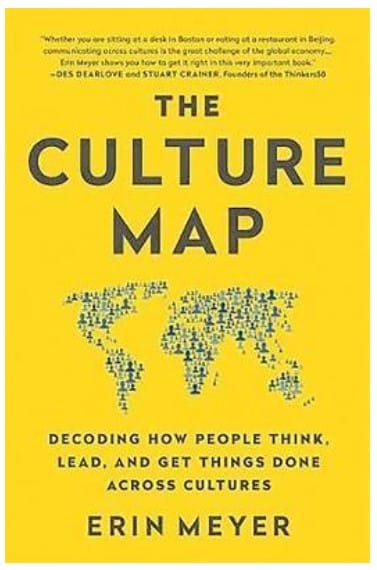In today’s interconnected world, the job market is increasingly diverse and global. As you embark on your job search journey, embracing cultural awareness can be your secret weapon to standing out from the crowd. One powerful way to demonstrate this awareness is by tailoring your CV for different cultural contexts. In this blog post, we’ll explore the dos and don’ts of crafting a cross-cultural CV that not only showcases your skills but also resonates with employers around the world.
Understanding cultural nuances in CVs
When it comes to CVs, what works in one culture might not necessarily work in another. Understanding the preferences and expectations of different regions can make a significant difference in how your CV is perceived.
Dos: Tailoring Your CV for Different Cultures
Language choices and keywords
Incorporating industry-specific keywords in your resume is vital for catching the attention of recruiters and Applicant Tracking Systems (ATS). However, these keywords may vary across cultures and regions. For instance, if you’re applying for a job in the UK, consider using terms like “CV” instead of “resume.” For Australia, “resume” is the correct term.
Example: If you’re a marketing professional targeting opportunities in the United States, make sure to include keywords such as “SEO,” “social media marketing,” and “content creation” to align with industry trends.
Highlighting international experience
International experience, whether through work, study or travel, showcase your adaptability and global perspective. When crafting your CV, emphasise these experiences and highlight the skills you gained that are relevant to the job you’re applying for.
Example: Imagine you studied abroad in Japan and now you’re applying for a project management role. Highlight how your time in Japan honed your cross-cultural communication and teamwork skills, both essential for successful project management in a global company.
Cultural relevance in achievements
Tailoring your achievements to resonate with the cultural values of the target region can make a strong impact. For instance, if you’re applying to a company known for its emphasis on innovation, highlight projects where you introduced innovative solutions.
Example: If you’re targeting a position in a Scandinavian company that values work-life balance, mention accomplishments that showcase your ability to deliver outstanding results while promoting a healthy work-life equilibrium.
Addressing cultural fit
Companies often seek candidates who align with their organisational culture. Incorporate hobbies, interests or volunteer experiences that reflect values important to the company and its culture.
Example: Applying to a tech startup in Silicon Valley? Mention your involvement in hackathons or coding clubs to show your alignment with the innovative and collaborative startup culture.
Don’ts: Avoiding common mistakes
Assuming universal understanding
Don’t assume that terms or concepts universally understood in your culture are known in others. For instance, abbreviations that are common in one country might not be familiar in another.
Example: Using abbreviations like “GMT” for time zones might be understood in a technical context, but it’s better to spell out “Greenwich Mean Time” for clarity when applying internationally.
Overloading with details
While it’s important to provide relevant details, avoid overwhelming your CV with excessive information. Tailor your content to the expectations of the culture you’re targeting.
Example: In a country where brevity is valued, such as Germany, focus on concise bullet points that highlight your key achievements without diving into unnecessary details.
Neglecting local formatting norms
Different regions have varying norms for CV formatting, including date formats, paper sizes and even the order of sections. Ignoring these details might convey a lack of attention to detail.
Example: If you’re applying to a company in the UK, use the day-month-year date format (e.g., 31 August 2023) rather than the month-day-year format common in the United States.
Misinterpreting cultural symbols
Be cautious with using symbols, colours or visuals that might carry different cultural meanings. What is considered positive in one culture might be perceived differently elsewhere.
Example: While the colour red signifies luck and prosperity in Chinese culture, it can symbolise danger or caution in Western cultures. Choose colours wisely to avoid misunderstandings.
Case study: Successful cross-cultural CV
Meet Sarah, a marketing professional based in Australia who aspired to work in the dynamic marketing scene of South Korea. Sarah researched the cultural nuances of Korean business culture and adjusted her resume accordingly:
- She translated her achievements into terms that resonated with the Korean business landscape. Her experience leading a cross-functional team became an example of her ability to foster harmony within diverse groups.
- Sarah highlighted her experience collaborating with clients from Asia-Pacific countries, showcasing her familiarity with the regional market.
- She ensured the resume was formatted to the A4 paper size commonly used in South Korea, demonstrating attention to local norms.
- Sarah’s tailored resume caught the eye of a Seoul-based marketing agency. Her thoughtful consideration of cultural aspects conveyed her commitment to adapting and thriving in a new environment.
Conclusion
Crafting a cross-cultural CV is a skill that can significantly boost your job search success in today’s global job market. By understanding cultural preferences, tailoring your content and avoiding common pitfalls, you can present yourself as a candidate who not only possesses valuable skills but also understands and appreciates the unique aspects of different cultures. Remember, a well-crafted cross-cultural CV is a testament to your adaptability, and it can open doors to exciting opportunities around the world.
Main image produced using Blue Willow AI
Book Review: The Culture Map by Erin Meyer

“The Culture Map” by Erin Meyer is a highly insightful and practical book that delves into the complex world of cross-cultural communication and understanding. Meyer’s straightforward and accessible writing style makes it easy for readers to grasp the concepts and apply them to real-world situations.
In a globalised world where interactions with people from diverse cultures are becoming increasingly common, “The Culture Map” serves as an indispensable guide. The book introduces a framework that helps individuals comprehend the fundamental cultural differences that impact our interactions, from communication styles and decision-making processes to work dynamics and leadership approaches.
What sets this book apart is its emphasis on nuance and avoiding stereotypes. Meyer takes a balanced approach, acknowledging that cultural tendencies are just that – tendencies – and not hard and fast rules. This helps readers avoid overgeneralisations and appreciate the uniqueness of each individual within a culture.
Throughout the book, Meyer draws on her extensive experiences and research, providing a wealth of real-life examples that further illuminate the concepts. From negotiating with colleagues in Japan to leading a team in Brazil, the book covers a wide range of scenarios that professionals might encounter in their global endeavours.
One of the book’s strengths is its practicality. Meyer offers actionable advice for improving cross-cultural interactions, whether you’re a business executive, a diplomat or simply someone who values effective communication with people from different backgrounds.
“The Culture Map” is not just for those working in international contexts; it’s for anyone who believes in the power of understanding and connecting with people. The book encourages empathy and curiosity, and it equips readers with tools to bridge cultural gaps and build meaningful relationships.
In conclusion, “The Culture Map” is a must-read for anyone seeking to navigate the complexities of our multicultural world. Erin Meyer’s humanistic approach, combined with practical insights, makes this book an invaluable resource that will undoubtedly enhance your cross-cultural competence.
Click here to buy a copy.

